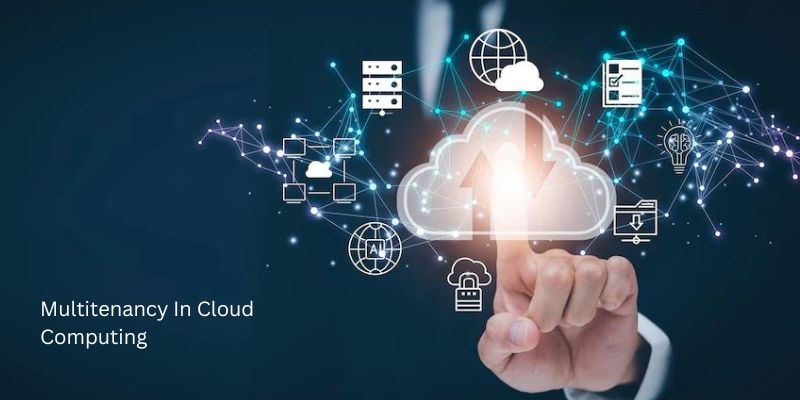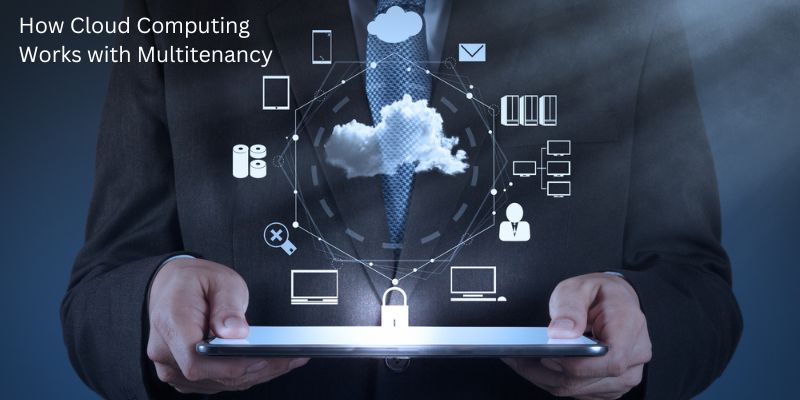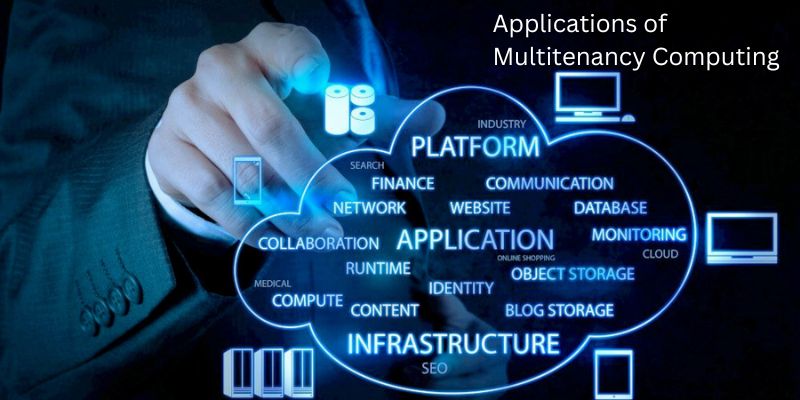Multitenancy in cloud computing is which enables several users or tenants to share the same physical and virtual resources in a single computing environment. This strategy maximizes resource use while cutting expenses and improving scalability. A multitenant environment allows different customers, applications, or business units to coexist while preserving security and isolation. In this article, we will discuss multitenancy in cloud computing in detail.
Contents
- 1 Multitenancy In Cloud Computing
- 2 Multitenancy In Cloud Computing: Multiple Tenancy in Cloud Computing
- 3 Multitenancy In Cloud Computing: How Cloud Computing Works with Multitenancy
- 4 Multitenancy In Cloud Computing: What advantages do multiple tenants provide?
- 5 Multitenancy In Cloud Computing: What disadvantages does multitenancy have?
- 6 Multitenancy In Cloud Computing: Applications of Multitenancy Computing
- 7 Conclusion
Multitenancy In Cloud Computing
A software architectural style known as multitenancy allows a single program instance to serve numerous separate user groups. It indicates that several users of cloud suppliers’ services are sharing the same computing resources. Despite sharing the same computing resources, each Cloud customer’s data is kept distinct and secure. It is a crucial idea in cloud computing. In cloud computing, multitenancy is a shared host where the same resources are allocated among various clients.
As an illustration: The operation of a bank is the same as multitenancy. Money can be kept in one bank by multiple people. Each customer asset, however, is unique. Customers cannot access each other’s funds or accounts, and they are unaware of each other’s account balances, information about their accounts, etc.
Multitenancy In Cloud Computing: Multiple Tenancy in Cloud Computing
Multitenancy is the simple definition of having several tenants. A public or private cloud solution’s IT resources are shared by a number of clients or end users in a cloud computing architecture. The data of each tenant remains separate from and invisible to the others, thus there is no need to be concerned about privacy.
Every tenant or customer in such a system has a unique place for their data storage and processing needs. Before granting the user access to their separated data, each portion of a multi-tenant cloud network must execute complicated permissions. It implies that your data is inaccessible to all other tenants and that you may only access it with the service provider’s authorization.
Typically, multiple members of one organization’s organization make up the tenants of a private cloud. If the cloud service provider is public, the tenants may come from several companies that safely share the server space. You’ll observe that this model is utilized by the majority of public cloud solution suppliers. The reason is that single-instance servers are easier to manage and less expensive to run.
Multitenancy In Cloud Computing: How Cloud Computing Works with Multitenancy
Multitenancy in cloud computing operates differently depending on the circumstance.
Free Cloud
Sharing the software instance is what multitenancy entails to the majority of service providers. The metadata for each tenant is saved so it can be used at runtime to modify the program instance. To access the data, a user must have permission, and they can only access their own data. They also have various experiences despite using the same instance of the application.
Personal Cloud
Private cloud multitenancy functions somewhat similarly to public cloud computing. The other renters’ shared affiliation with the same company might be the only distinction. On a private cloud platform, resources are shared by many teams within the same company.
Container Architecture
Containers are self-contained packages that include an application, all of its required system libraries, libraries, and other components. No matter where they are hosted, apps function the same way using containers. It is necessary to establish multiple containers to address multiple tenants. They can therefore be utilized by several users on the same host machine.
Multitenancy In Cloud Computing: What advantages do multiple tenants provide?
Only multitenancy makes a large number of cloud computing advantages available. Following are two significant ways that multitenancy enhances cloud computing:
- A better use of resources would be to reserve multiple machines rather than one, as it is unlikely that one renter would utilize all of the computational capacity of one machine. Utilization of the resources is enhanced by sharing equipment across several renters.
- Cost savings: By allowing numerous users to share resources, a cloud vendor can provide services to a larger number of users at a lower price than if each user needed a separate infrastructure.
Multitenancy In Cloud Computing: What disadvantages does multitenancy have?
Possible security concerns and compliance issues: Depending on the regulations, certain businesses may not be able to store data in shared infrastructure, regardless of how safe it is. Additionally, if the cloud vendor has configured their infrastructure properly, security issues or corrupted data from one tenant may not propagate to other tenants on the same server due to the rarity of such occurrences. The fact that cloud vendors are often able to invest more in their security than individual firms can helps to partly alleviate these security threats.
Multitenancy In Cloud Computing: Applications of Multitenancy Computing
- ADP A cloud-based business data analytics program is called DataCloud. Since it caters to several business segments like HR, payroll, time and expenses, workforce attendance, HR outsourcing, corporate compliance, and many more, it is one of the best instances of multitenancy cloud software. Depending on their specific internal business requirements, different tenants or cloud app users can modify the app and its policies.
- A popular cloud-based accounting and bookkeeping program called FreshBooks uses the multitenancy approach to deliver its SaaS services. The program has more than ten functionalities for each business’ accounting department. Customers can select the features and only pay for the services they really utilize, depending on their company’s needs. Customers can also change their applications in accordance with corporate branding. Such thorough adaptations are made possible by multitenancy in cloud computing.
- The Zoho CRM and Workplace both utilize cloud multitenancy. It features more than 40 business applications to operate your firm smoothly. You can use the specific tools you require, such as Zoho Assist and Zoho CRM, or you can subscribe to a full package, such as Zoho One.
- Multi-tenant projects have increased significantly in the Kubernetes community. You can share clusters based on the demands of various teams by utilizing the Kubernetes multitenancy capability. With this strategy, administrative tasks are made simpler and money is saved. Cluster sharing and multi-clustering are two methods that multitenancy can be accomplished in this case.
Conclusion
Multitenancy is a key idea in cloud computing that has completely changed how resources are shared and used. Cost reductions, scalability, and improved resource management are just a few of its many advantages. More effective and affordable cloud services are now possible because to the capacity to support several users or tenants in a single environment.





